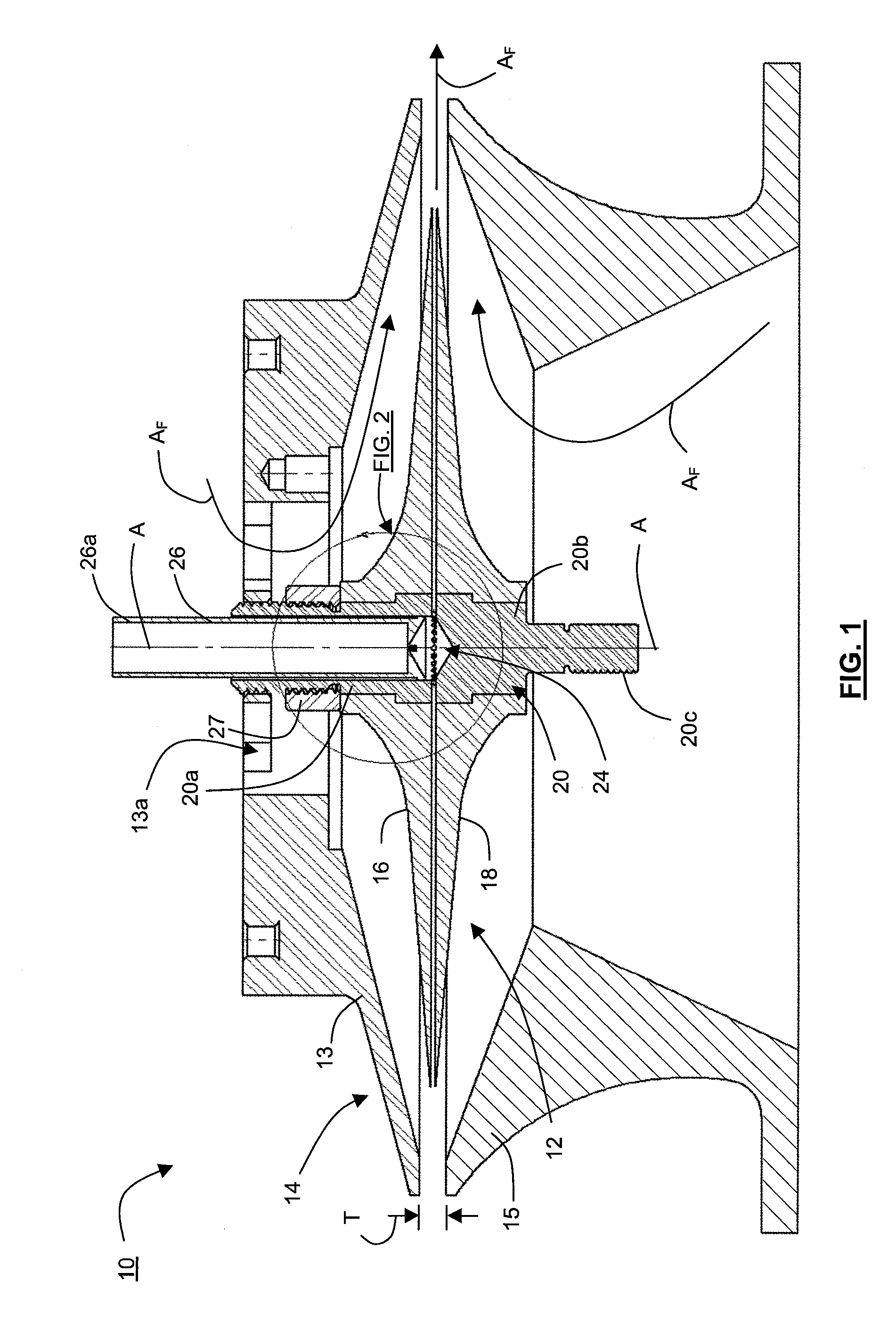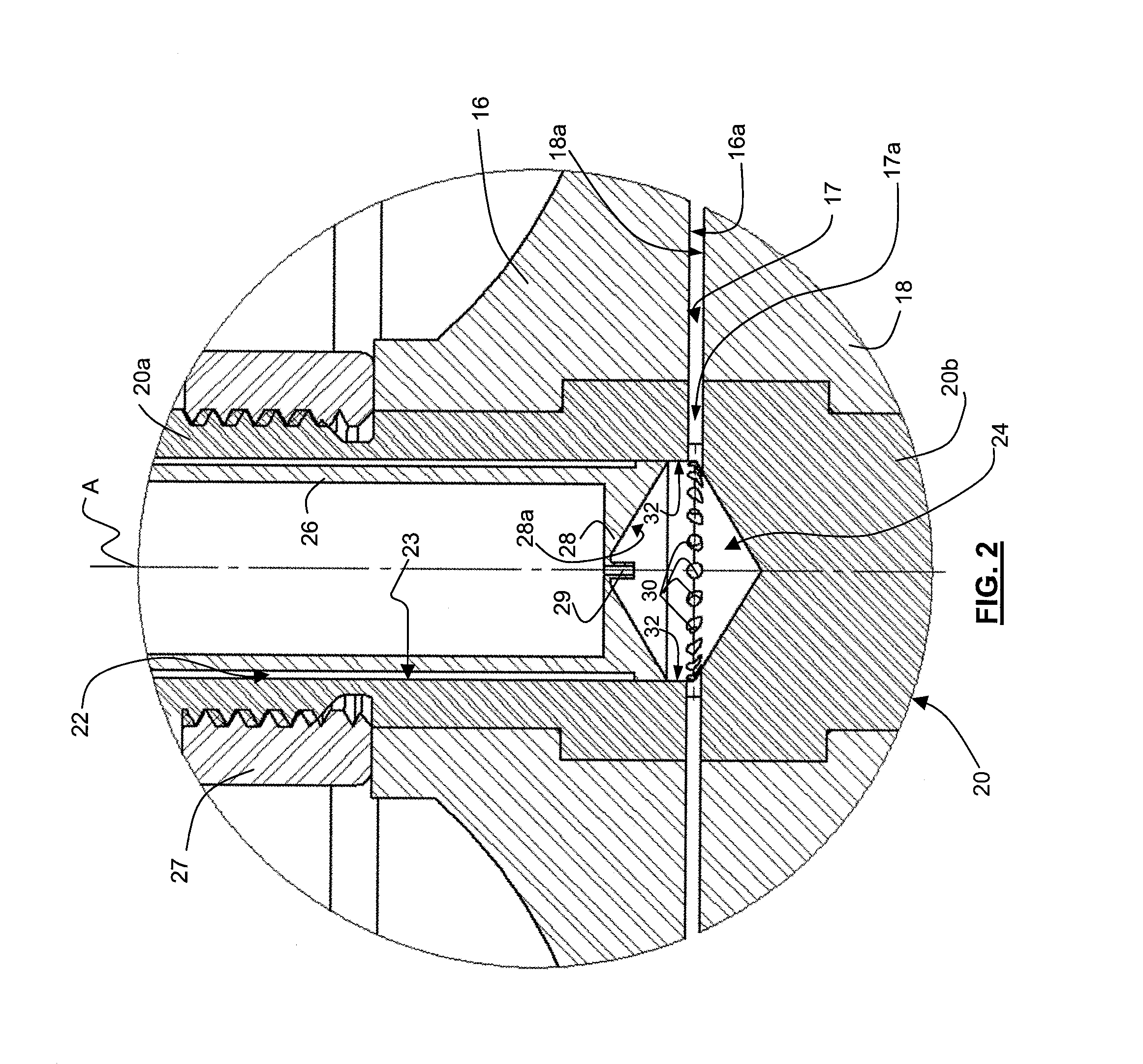Apparatus, systems and methods for producing particles using rotating capillaries
a technology of rotating capillaries and apparatuses, applied in glass making apparatuses, manufacturing tools, transportation and packaging, etc., can solve the problems of limiting the fluid feed rate of such devices, the width of the capillary should be sufficiently small, and the particle formation rate of such devices tends to be relatively large, so as to achieve the effect of reducing the amount of air shear, reducing the size of the capillary, and increasing the liquid feed ra
- Summary
- Abstract
- Description
- Claims
- Application Information
AI Technical Summary
Benefits of technology
Problems solved by technology
Method used
Image
Examples
Embodiment Construction
[0063]Turning to FIG. 1, illustrated therein is an apparatus 10 for forming particles according to one embodiment of the invention.
[0064]The term “particles” as generally used herein includes fibers (e.g. filaments, ligaments, etc.), droplets, and other similar shapes made from any suitable liquid (e.g. liquid polymers, molten glasses, molten metals, pure liquids, solutions and suspensions, etc.) and which may solidify, evaporate, and / or remain in liquid form.
[0065]Generally, the apparatus 10 is configured so as to receive the material in a liquid state and then pass the liquid material through one or more rotating capillaries.
[0066]The term “capillary” as used herein generally refers to a space between two adjacent surfaces, or a space defined within a single surface that is closed in upon itself to present two surfaces that are connected by a curved region (e.g. a capillary tube). For example, the liquid material may be passed through a narrow space between two opposing surfaces o...
PUM
| Property | Measurement | Unit |
|---|---|---|
| gap distance | aaaaa | aaaaa |
| gap distance | aaaaa | aaaaa |
| radius | aaaaa | aaaaa |
Abstract
Description
Claims
Application Information
 Login to View More
Login to View More - R&D
- Intellectual Property
- Life Sciences
- Materials
- Tech Scout
- Unparalleled Data Quality
- Higher Quality Content
- 60% Fewer Hallucinations
Browse by: Latest US Patents, China's latest patents, Technical Efficacy Thesaurus, Application Domain, Technology Topic, Popular Technical Reports.
© 2025 PatSnap. All rights reserved.Legal|Privacy policy|Modern Slavery Act Transparency Statement|Sitemap|About US| Contact US: help@patsnap.com



